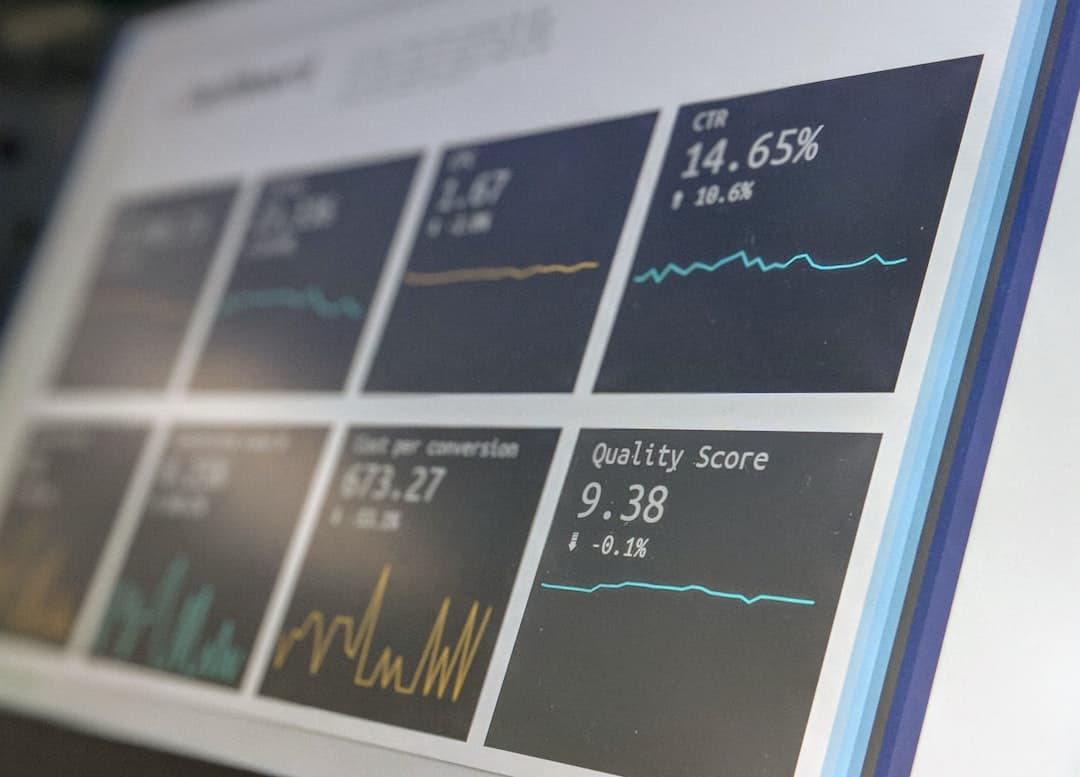Automating Your Blog for SEO Success
Understanding Blog Automation: A Modern SEO Foundation
What Is Blog Automation?
Blog automation refers to the use of technology platforms and AI-driven tools to manage repetitive content marketing tasks with minimal manual intervention. Core functions include automating topic ideation, scheduling, drafting, and publishing—streamlining workflows that once demanded significant administrative oversight. With blog automation in place, agencies can shift more resources toward strategy and creative problem-solving for client campaigns.
For SEO agencies, automation also includes integrating keyword research, optimizing meta data, and managing technical SEO elements within publishing pipelines. These smart systems can automatically enforce on-page SEO best practices, suggest internal linking opportunities, and even update existing content based on performance metrics. The ultimate objective is to increase content output and consistency without sacrificing quality, allowing agencies to focus on higher-value activities that drive client growth.
Why Blog Automation Matters for SEO Success
Blog automation is essential for agencies tasked with managing large-scale content campaigns across various niches. Search engines reward consistency, speed, and technical precision—qualities difficult to achieve with manual scheduling and optimization alone. Automation ensures timely content delivery, accurate keyword integration, and uniform adherence to on-page SEO standards, giving each article the technical backing required to rank competitively.
For SEO agencies, automation is especially valuable when faced with tight turnarounds and diverse client demands. It enables high-volume publishing without diluting quality or stretching resources too thin. Automation also reduces the risk of human error in repetitive tasks like meta description formatting or XML sitemap generation. This reliability allows agencies to meet client expectations for fast, visible results while retaining bandwidth for complex strategic initiatives, industry research, and authentic engagement.
Key Components of Blog Automation for Enhanced SEO
Content Planning and Scheduling Automated
Automating content planning and scheduling enables agencies to handle high content volumes across diverse client accounts. By integrating editorial calendars with automation platforms, teams assign topics, set deadlines, and map publishing cycles in advance. These tools reduce the manual effort required to coordinate writers, editors, and client approvals, ensuring each touchpoint is tracked and transparent.
Automated scheduling features also guarantee timely publication, which is vital for maintaining SEO consistency and audience engagement. Agencies can pre-load approved content into scheduling systems that publish articles at optimal times based on audience analytics. This eliminates last-minute scrambles and publishing gaps that can hurt rankings or erode client trust. Ultimately, automation in planning and scheduling gives agencies the reliability and control needed to scale content output while maintaining the flexibility to tweak campaigns as goals or trends shift.
To see how automation can streamline your agency’s workflow, start with a free Airticler trial today.
Editorial Workflows and Collaboration
Technology-driven editorial workflows now centralize task management and foster team collaboration in agencies handling dozens of client accounts. By mapping out every step—from ideation through final approval—these workflows give clear visibility into content status and individual responsibilities. Automated task assignments ensure writers, editors, and strategists receive timely notifications as content progresses, reducing bottlenecks and keeping projects on schedule.
Collaboration platforms further streamline internal communication by consolidating feedback, comments, and client revisions in one place. For agencies, this means faster content cycles and fewer miscommunications. These workflows also allow managers to monitor performance, allocate resources effectively, and maintain rigorous editorial standards across high volumes. Together, automation and structured collaboration maintain quality and content velocity, making it practical to meet the unique demands of each SEO client without sacrificing brand alignment or campaign momentum.
Integrating Keyword Research and Optimization
Integrating keyword research and optimization into automated blog workflows is fundamental for delivering measurable SEO outcomes. Modern platforms now embed keyword discovery tools that surface high-value opportunities aligned with client objectives. Automatically incorporating these keywords during content creation minimizes manual input while ensuring each article targets relevant search intent.
Advanced systems further enhance optimization by recommending internal links, optimizing meta tags, and flagging keyword gaps in real time. For digital marketing agencies, this integrated approach guarantees every piece of content—no matter the writer or subject—meets essential on-page SEO standards. The result is a scalable, repeatable process that elevates ranking potential without sacrificing the strategic insight required to outpace competitors in complex, multi-client environments.
Popular Blog Automation Tools: Streamlining Your Strategy
Content Creation, Editing, and Curation Tools
Advanced content creation, editing, and curation tools have redefined how digital marketing agencies manage complex blog portfolios. These platforms can draft outlines, recommend relevant topics, check grammar, and even adapt writing style to fit different brand voices. They enable agencies to move faster by generating initial drafts or content ideas based on target keyword sets and audience preferences. For example, many tools integrate with CMS solutions, automatically formatting content for immediate publishing and ensuring technical SEO requirements—such as meta tags and internal linking—are seamlessly addressed.
Yet, efficiency alone isn’t enough. Editing platforms powered by AI can correct language, flag SEO gaps, and enforce tone consistency, but discerning editors are still essential. Agencies lean on these tools for first-pass error checking and compliance monitoring, freeing up time to focus on more strategic revisions and creative quality control. Curation tools, meanwhile, help teams identify trending topics and authoritative sources, feeding editorial calendars with fresh, timely ideas. Combined, these solutions act as force multipliers for agencies with diverse client rosters, supporting consistent publishing without sacrificing precision or voice.
Automation Platforms for Social Sharing and Monitoring
Automation platforms designed for social sharing and monitoring reduce the operational lift associated with promoting blog content and tracking its impact. Agencies can schedule posts across multiple networks, manage promotion calendars, and ensure every published article reaches target audiences without manual intervention. These systems also adapt publishing times to user engagement patterns, maximizing visibility and click-through rates.
Beyond scheduling, social monitoring tools aggregate data on audience reactions, shares, and brand mentions. This real-time feedback loop is critical for agencies managing multiple accounts—providing immediate signals when a campaign resonates or an issue demands a rapid response. By automating both content distribution and analytics gathering, agencies gain actionable insights to refine strategy, demonstrate ROI, and respond proactively to changes in audience behavior.
Selecting the Right Tools for Your Needs
Choosing the right blog automation tools requires a thorough assessment of an agency’s content workflow, client demands, and SEO objectives. Different platforms excel in different areas—some specialize in large-scale scheduling and collaboration, others in keyword analysis or real-time optimization. Agencies handling varied industries benefit from solutions that offer flexible integrations with existing CMSs, analytics suites, and client portals. The ability to tailor automation parameters to specific brand guidelines is critical for preserving consistency and meeting client expectations.
It’s also important to evaluate support for multi-user collaboration, granular permission controls, and workflow customization. Tools that provide transparent reporting and actionable insights empower agencies to refine their strategy continuously and justify value for their clients. By prioritizing systems that balance automation with human oversight, agencies ensure efficiency gains translate to sustainable, high-quality SEO performance across every account they manage.
Balancing Automation and Human Creativity
Recognizing Automation’s Limits in Blogging
Blog automation streamlines foundational tasks, but its reach has natural boundaries. Automated platforms excel at orchestrating editorial calendars, optimizing basic on-page elements, and distributing content efficiently. However, relying solely on automation can lead to a uniform voice and generic insights—outcomes that rarely satisfy either discerning clients or search engines prioritizing expertise and originality.
Critical nuances still require skilled human judgment. For example, automation may sequence publishing and recommend keywords, but it cannot replace an SEO agency’s ability to interpret shifting industry trends or adapt tone for complex, sensitive topics. Sophisticated audiences—especially in technical or regulated industries—expect depth and authority that go beyond standardized output. Therefore, agencies must pair blog automation with ongoing editorial oversight, ensuring each article genuinely advances a client’s objectives while meeting the latest SEO standards.
Maintaining Authenticity and Expertise
Maintaining authenticity and expertise in automated blog workflows challenges even the most advanced agencies. While automation accelerates drafting and publishing, it cannot fully capture the nuanced voice or specialized insights clients expect. Therefore, agencies must implement robust editorial checks to preserve each brand’s unique identity. This often includes manual review of language, stories, and examples to ensure the content is both credible and distinct.
Expertise remains irreplaceable when content needs to address industry-specific developments, regulatory changes, or niche audience pain points. Automated suggestions may surface relevant topics or data, but human subject matter experts are required to interpret those trends, share meaningful analysis, and cite authoritative sources. By actively blending automated efficiency with informed oversight, agencies deliver content that builds trust, outperforms generic competitors, and aligns precisely with evolving SEO standards.
Collaborating With an SEO Agency: When and Why It Matters
Complementing Automation With SEO Agency Expertise
Automated blog solutions dramatically speed up content production, but true SEO performance still depends on strategic human input. An experienced SEO agency brings perspective no automated platform can replicate—such as deciphering complex audience search behavior, intuitively refining brand tone, and adapting content plans as algorithms evolve. While blog automation can handle bulk tasks like scheduling, keyword optimization, and technical formatting, agencies are indispensable for setting the strategic vision and adjusting content direction when goals change or markets shift.
For agencies managing multi-client portfolios, blending automation and expertise is non-negotiable. Automated workflows free time and reduce routine pressures, yet only human review can guarantee that content aligns with each client’s voice, industry nuances, and evolving expectations. For example, while an automation platform can schedule a month’s worth of posts, the agency steps in to adjust headline approaches based on seasonal trends or inject recent case studies that bolster client authority. This collaborative approach keeps content sharp, relevant, and uniquely branded, ensuring every published piece contributes directly to measurable SEO outcomes.
Evaluating Agency Capabilities in Blog Automation
Assessing an agency’s proficiency with blog automation requires a close look at both their technical infrastructure and editorial process. Leading agencies integrate advanced automation tools that streamline content scheduling, keyword optimization, and multi-platform publishing. However, the true differentiator lies in their ability to customize these workflows—adapting automation to blend seamlessly with client-specific needs and evolving SEO priorities.
Scrutiny should also focus on how agencies balance efficiency with quality control. Do they support automated content creation with rigorous human review? Are their editors empowered to catch nuances missed by algorithms, such as subtle shifts in brand tone or complex regulatory requirements? High-performance agencies routinely audit results, refine their automation parameters based on SEO performance data, and maintain transparent practices that demonstrate clear ROI to clients. This adaptability is crucial for scaling quality content across varied industries while upholding each client’s standards.
Looking Ahead: The Future of Blog Automation in SEO
The future of blog automation in SEO will be defined by even deeper synergy between AI-driven efficiencies and human creativity. Emerging tools are already moving beyond simple rule-based systems, offering contextual understanding of industry trends, conversational tone adaptation, and dynamic content updates driven by real-time performance data. For digital marketing agencies, this evolution means less time spent on manual optimization tasks and greater capacity to focus on strategy, thought leadership, and experimentation.
We anticipate further advances in predictive analytics will help agencies anticipate algorithm changes and shifting user behavior before they impact rankings. Seamless integration with analytics platforms and content management systems will offer more transparency into results and clearer ROI tracking for every client campaign. As automation matures, agencies that continuously invest in both the right technology and human expertise will be positioned to scale authentic, high-impact content—turning the pace of innovation into a tangible competitive advantage.



